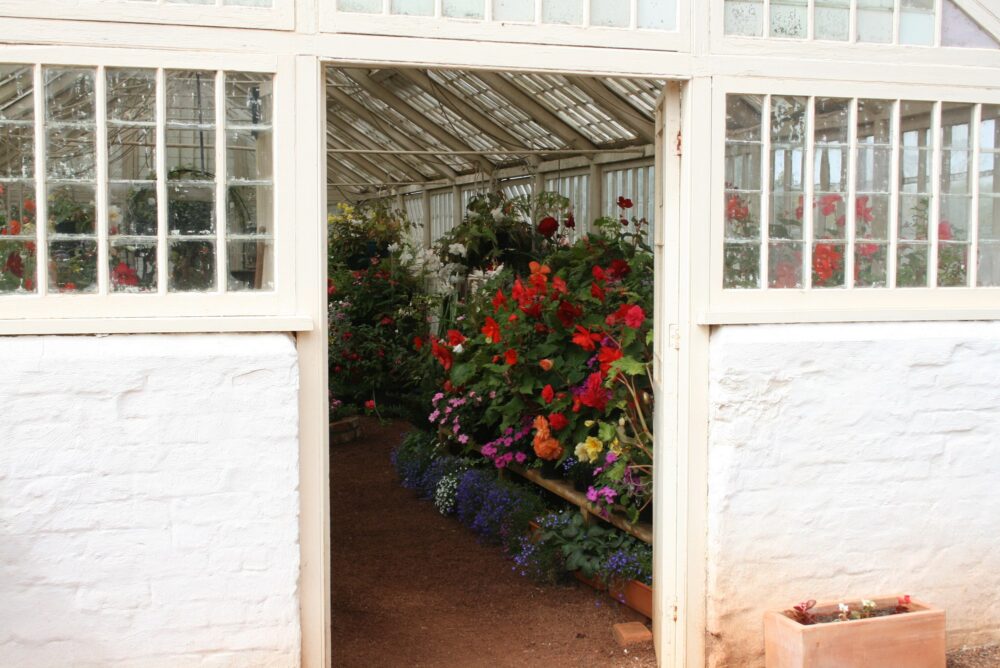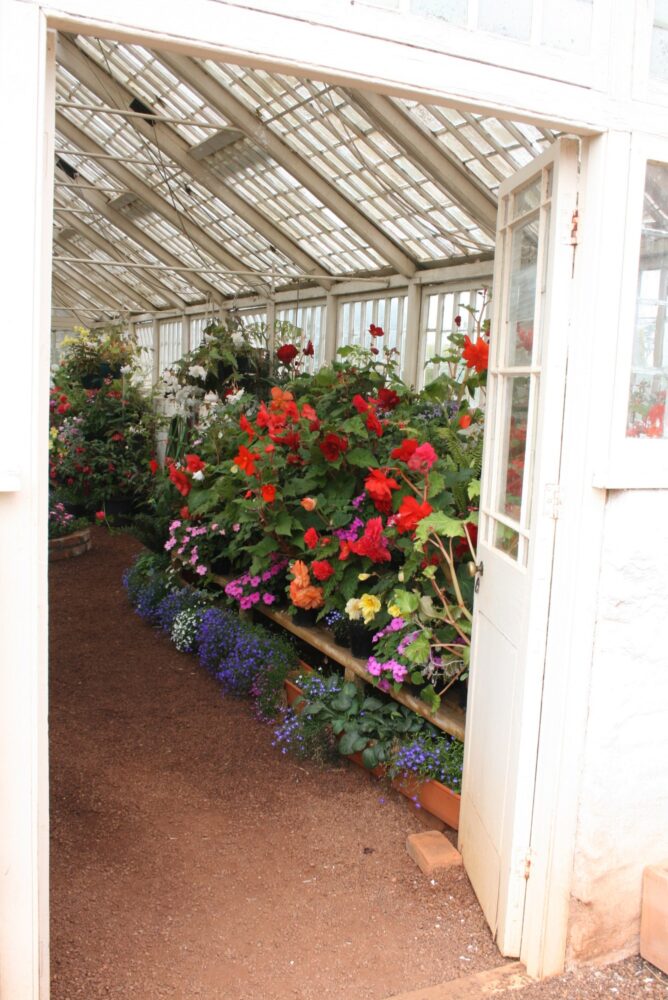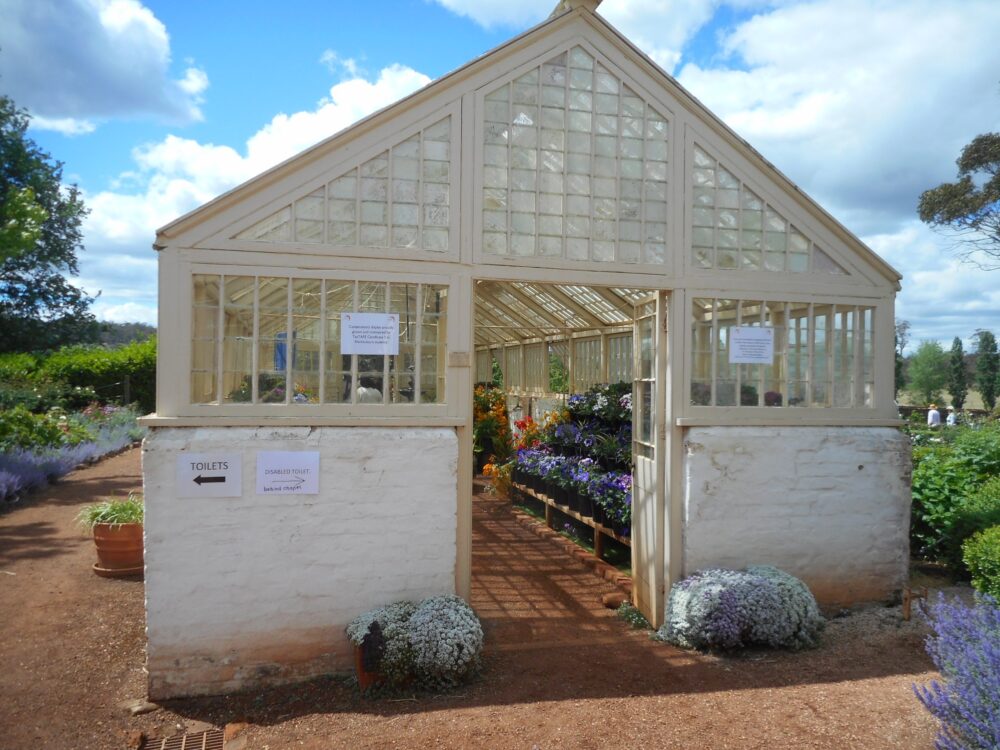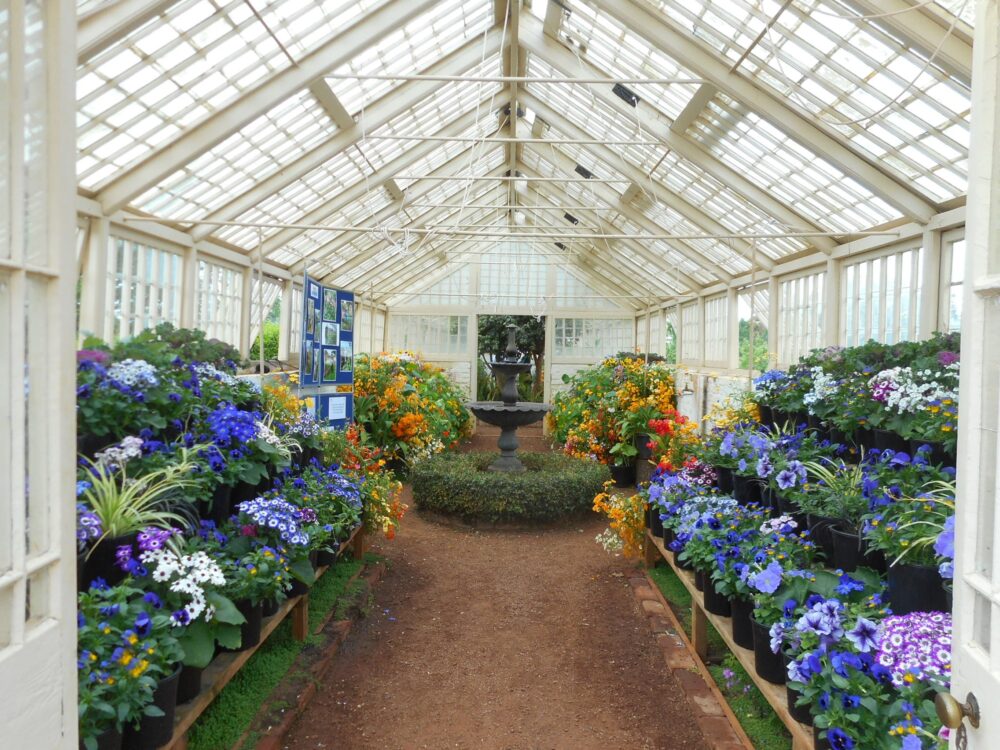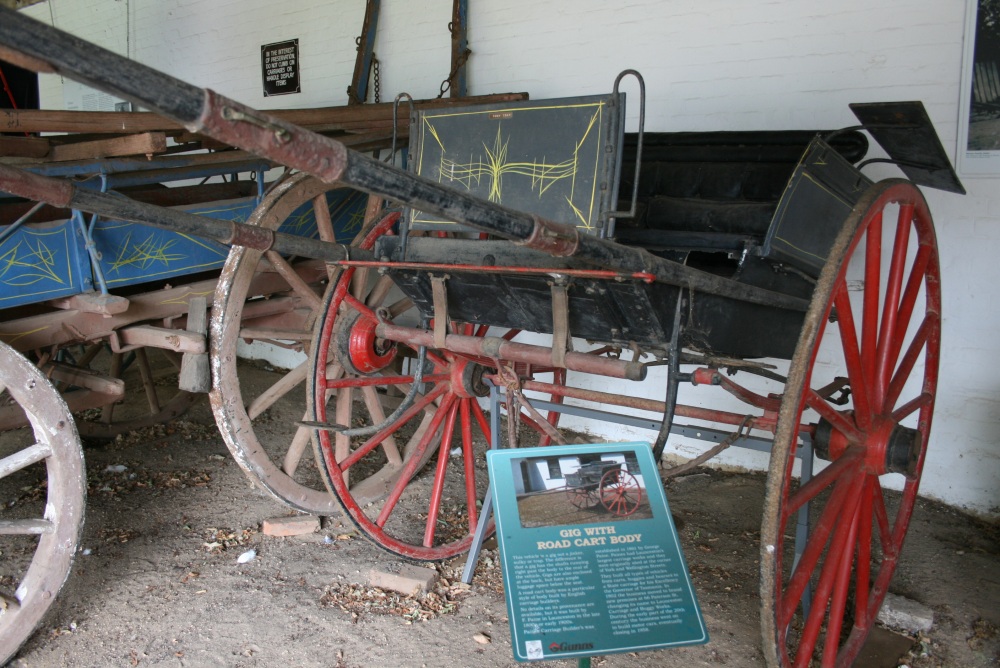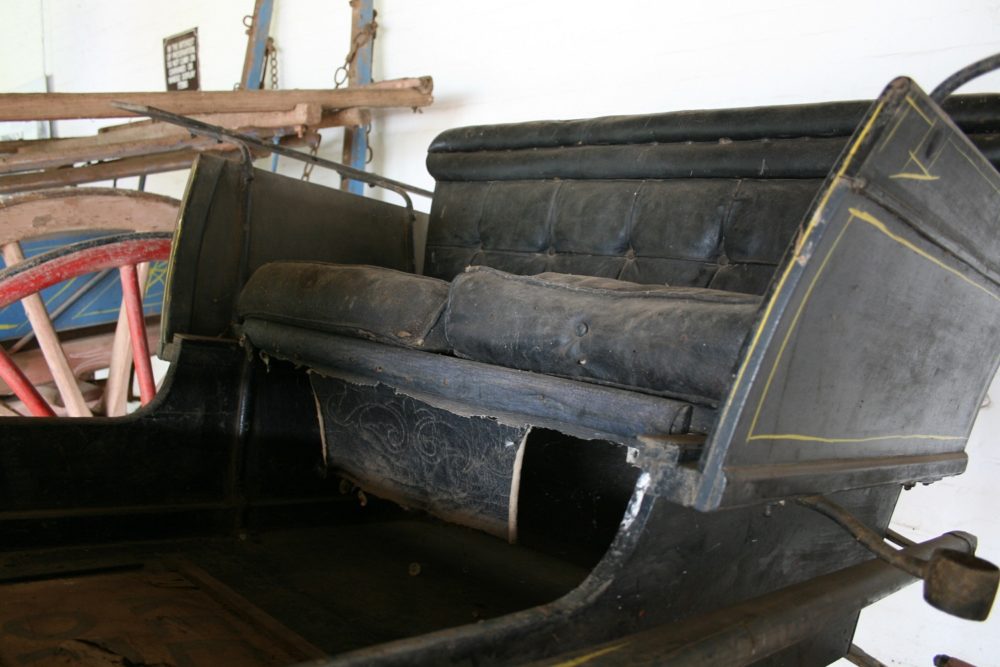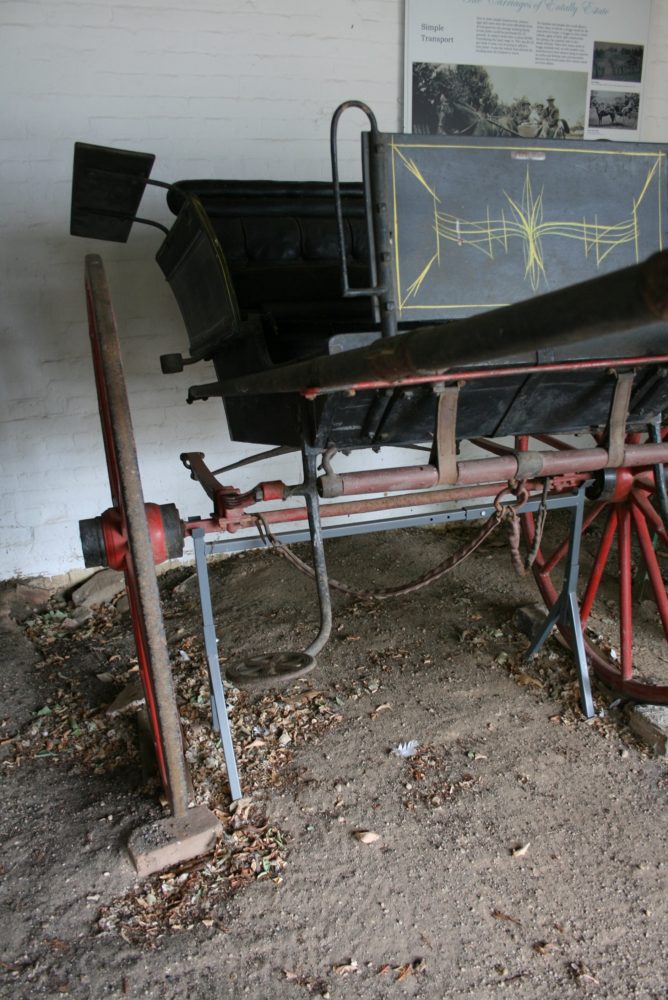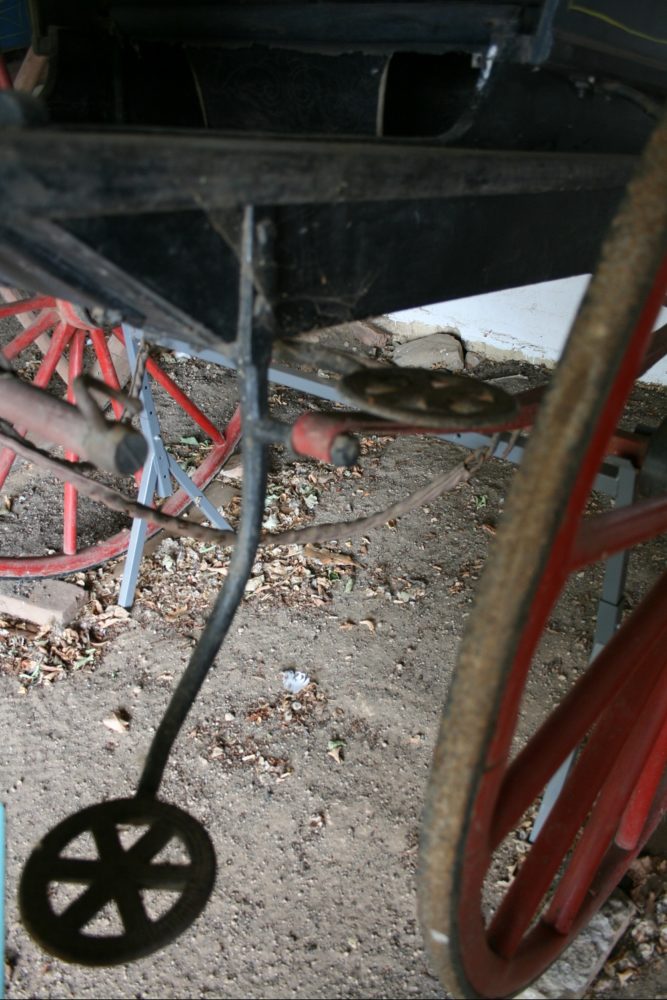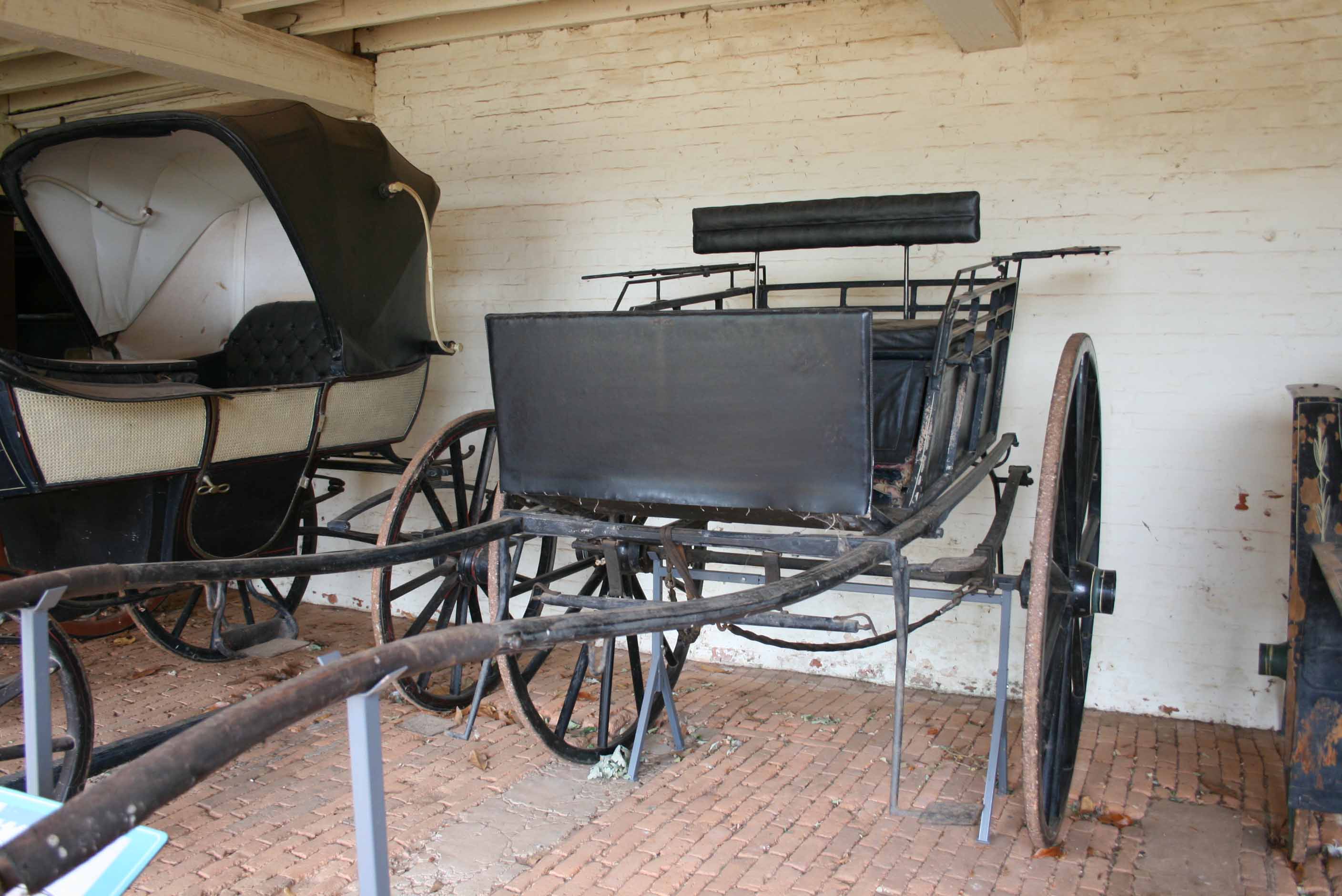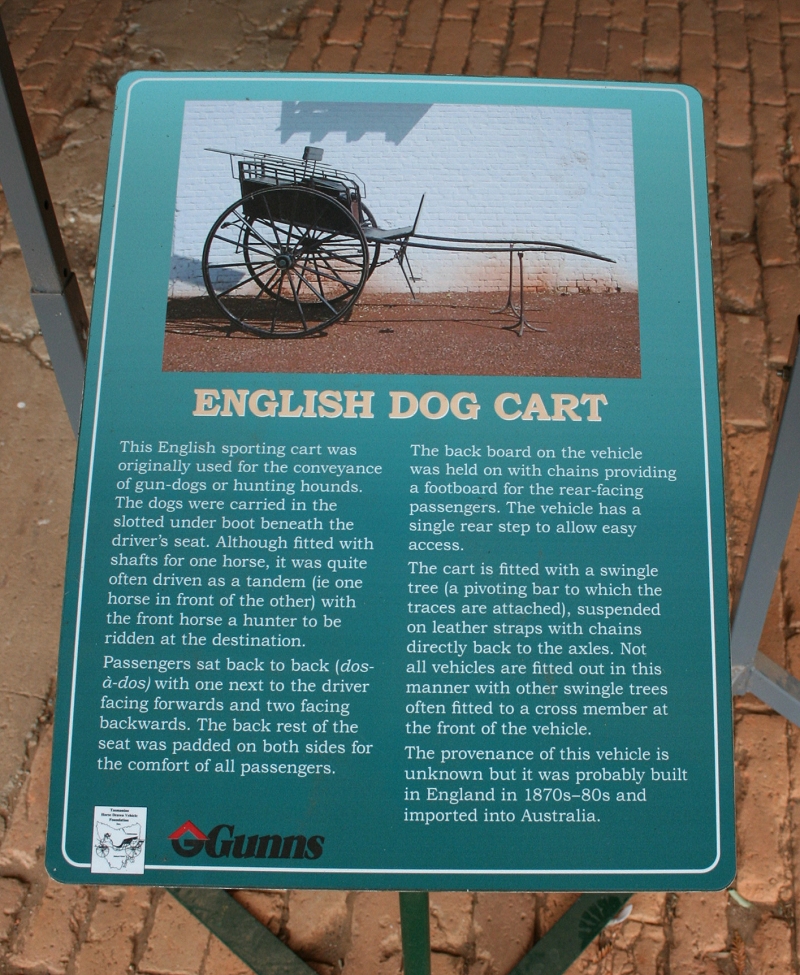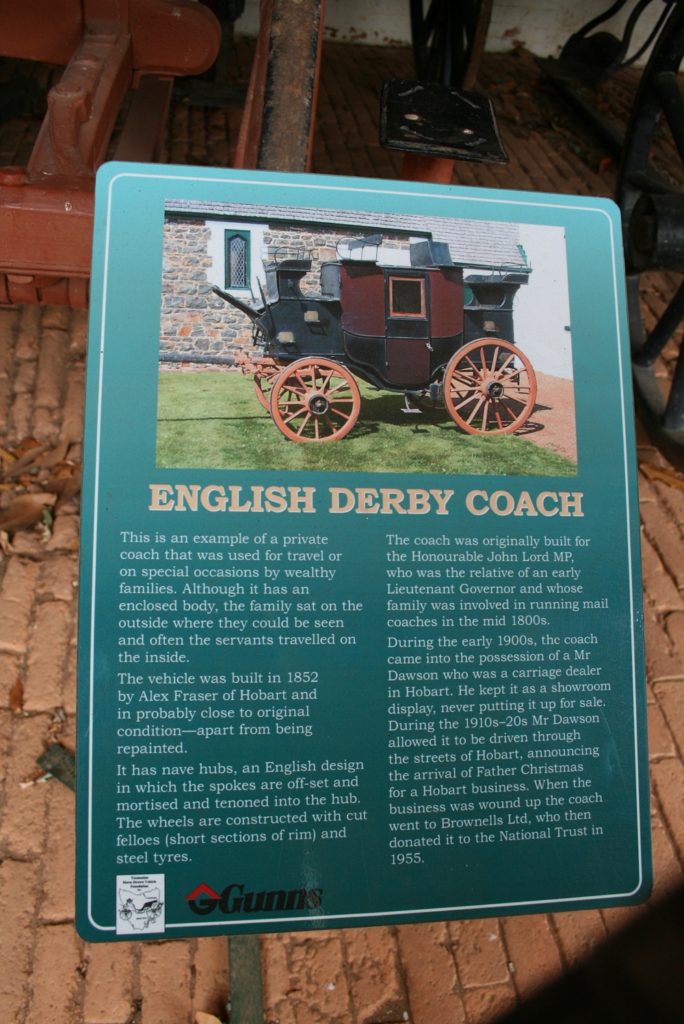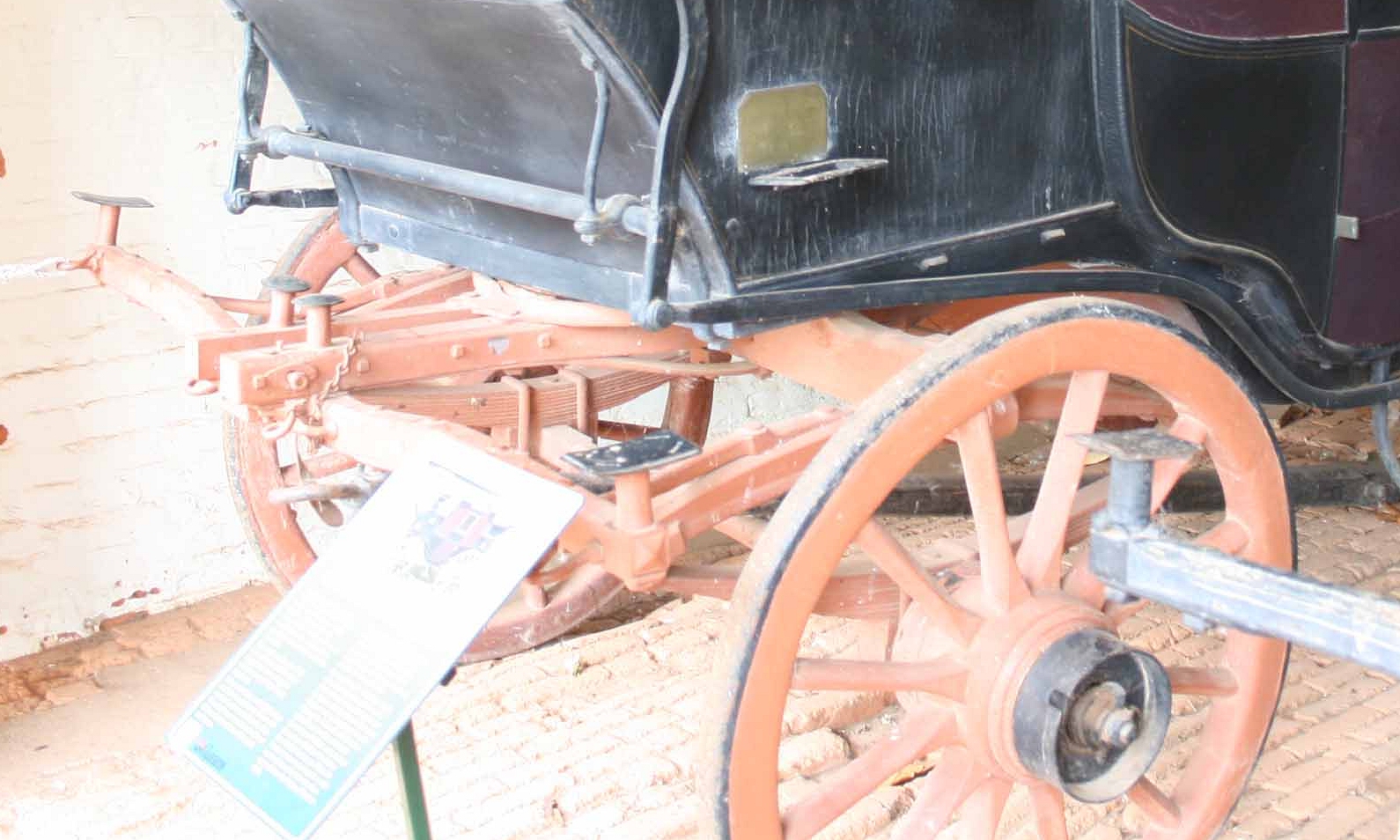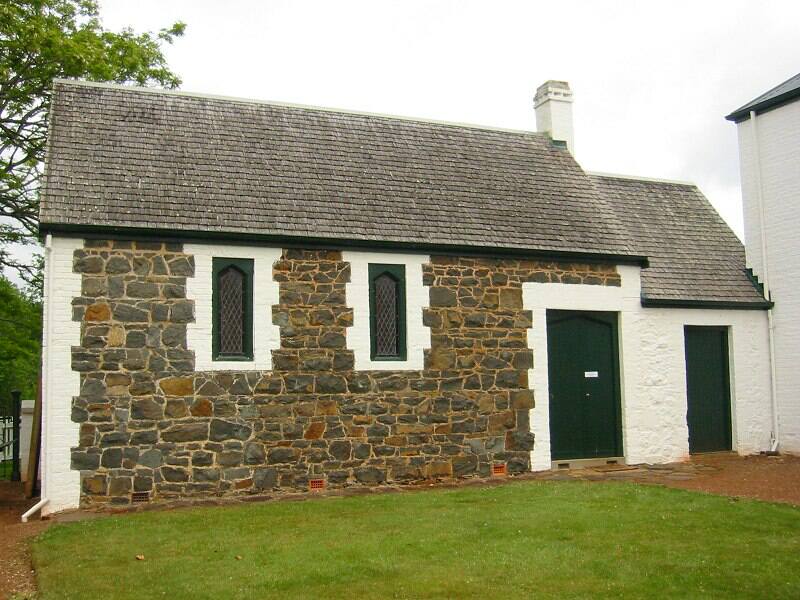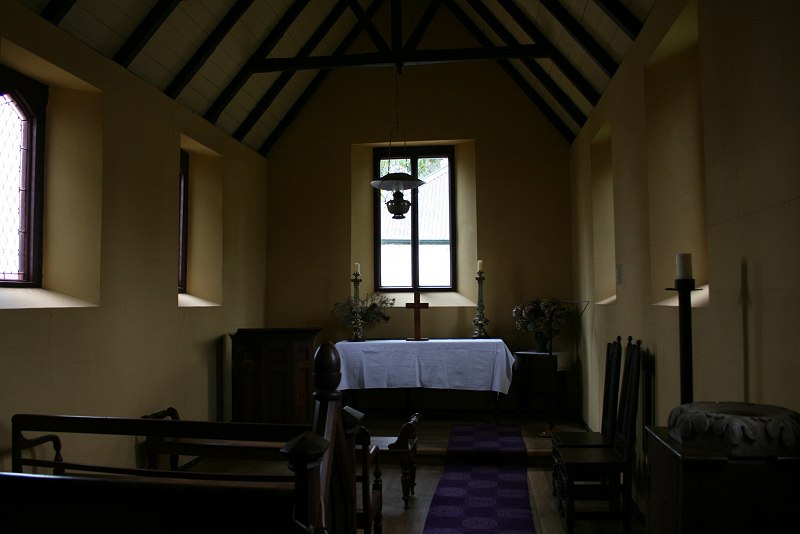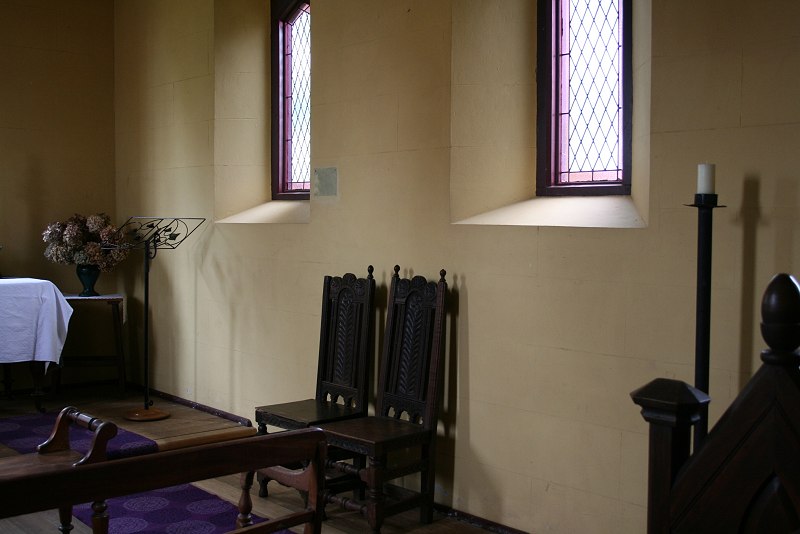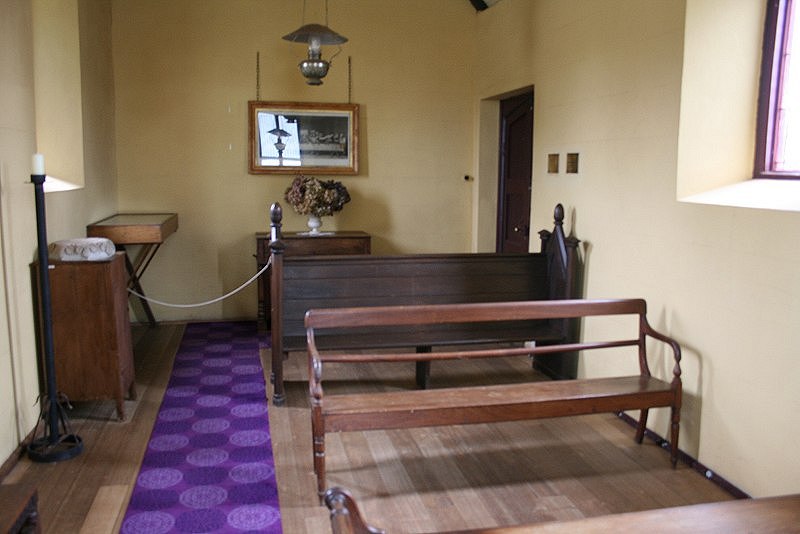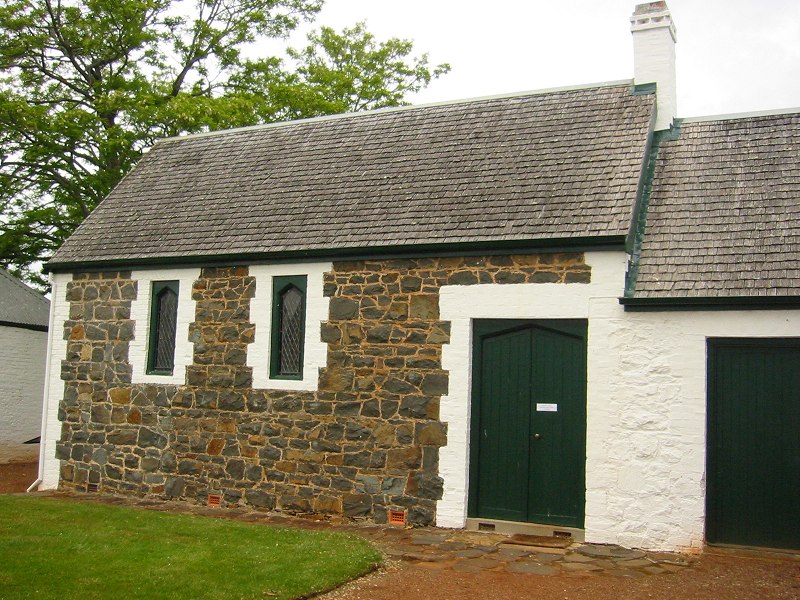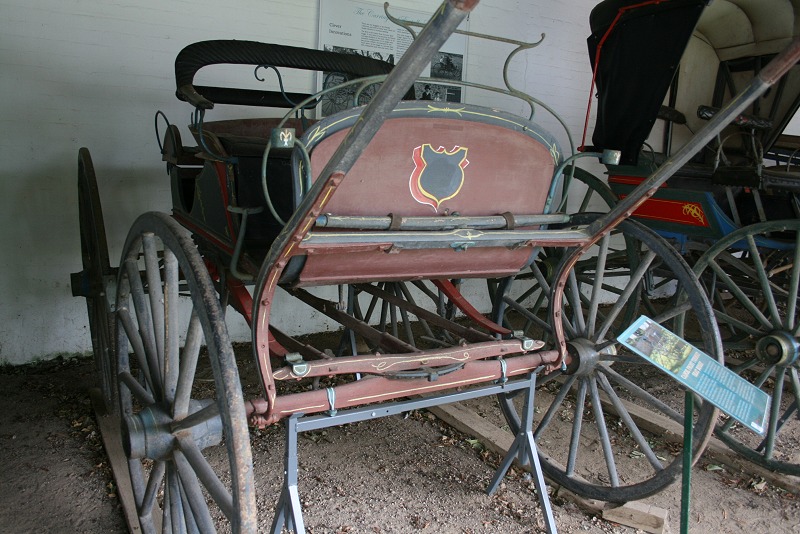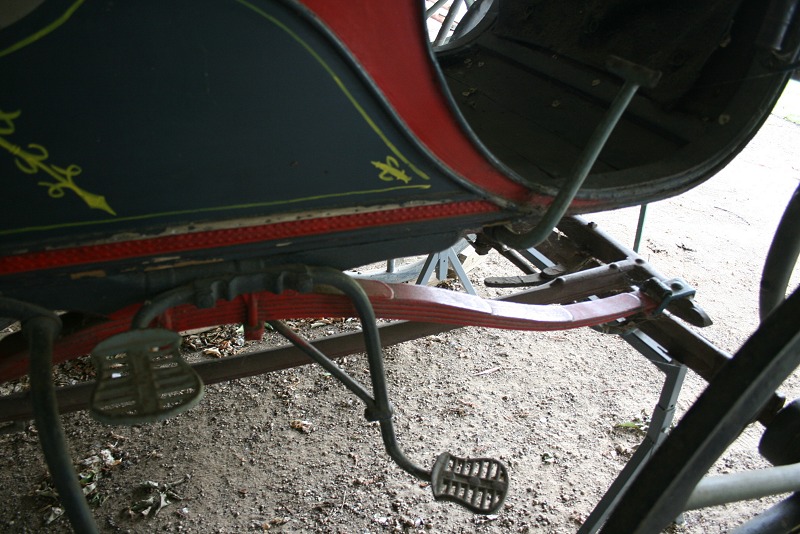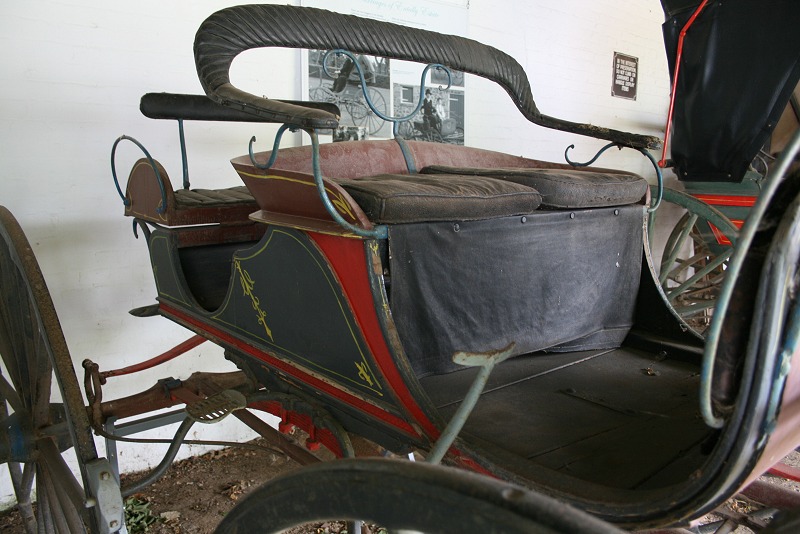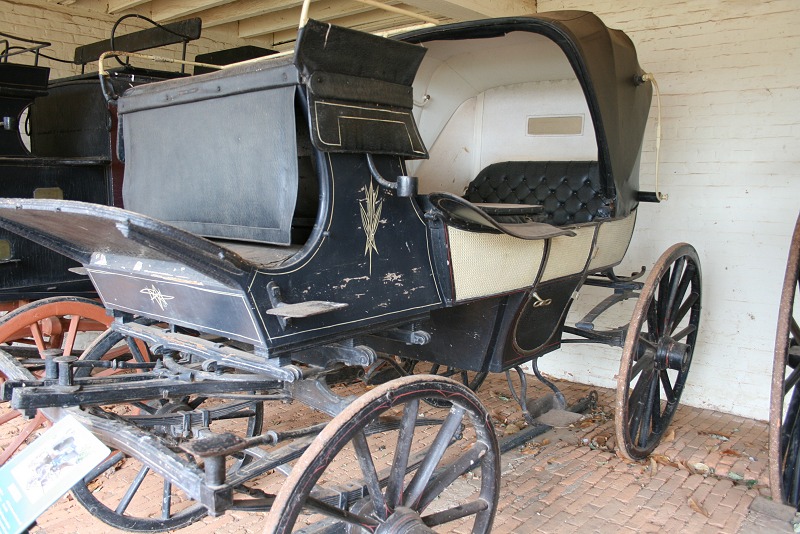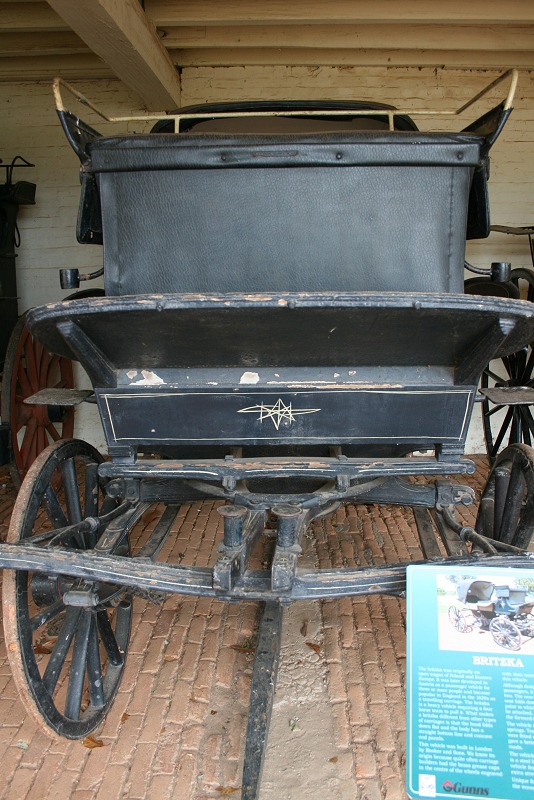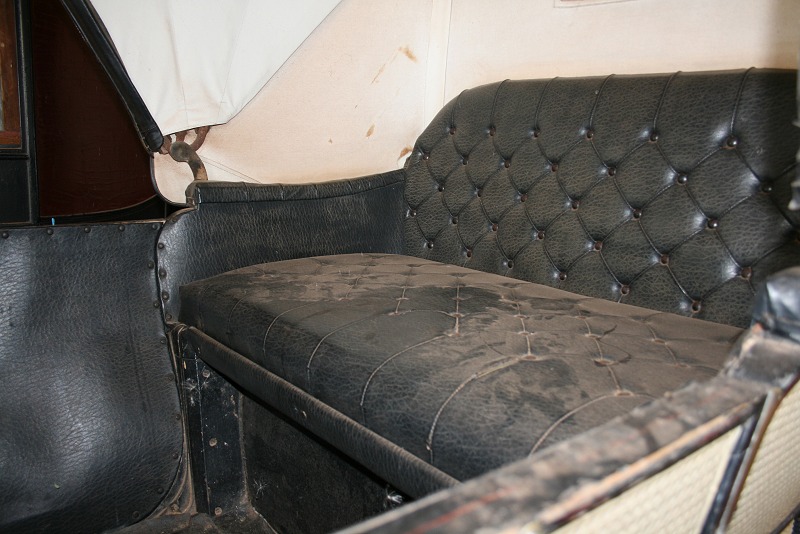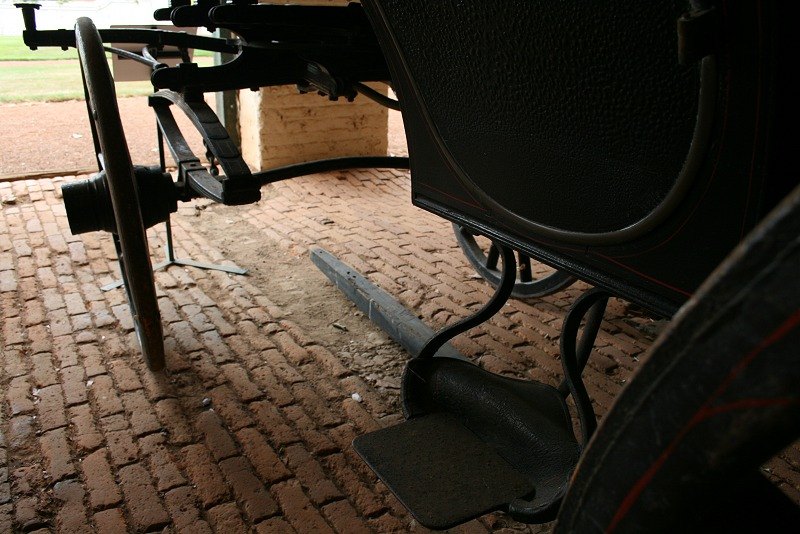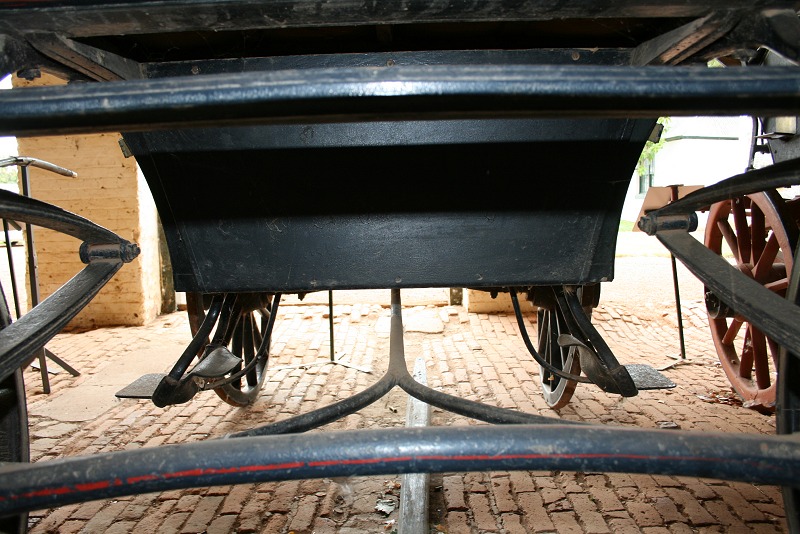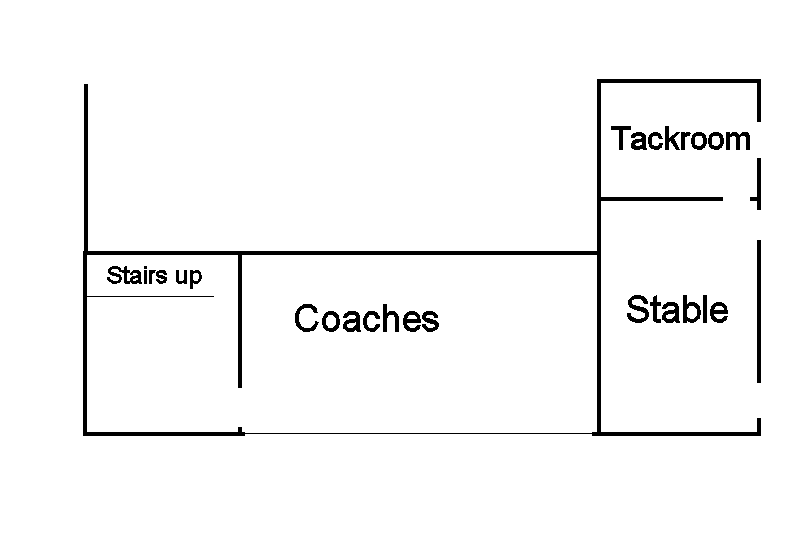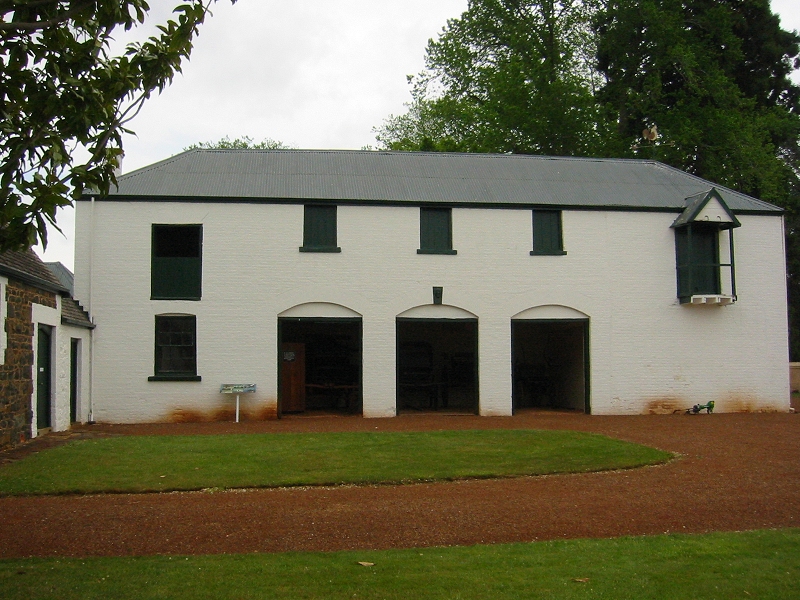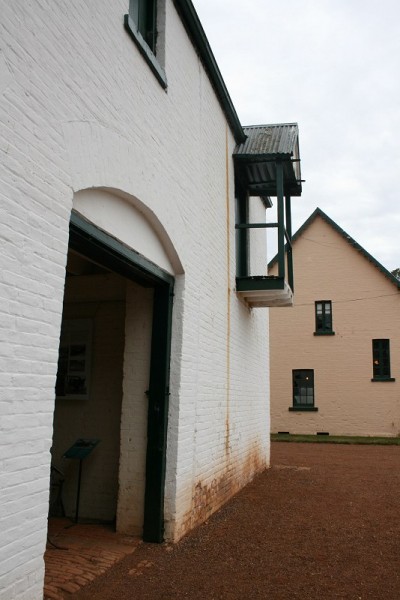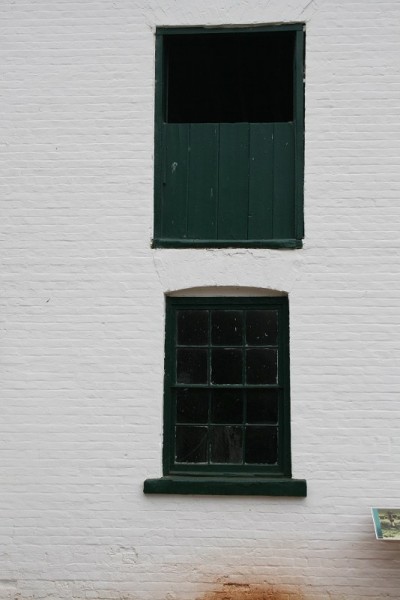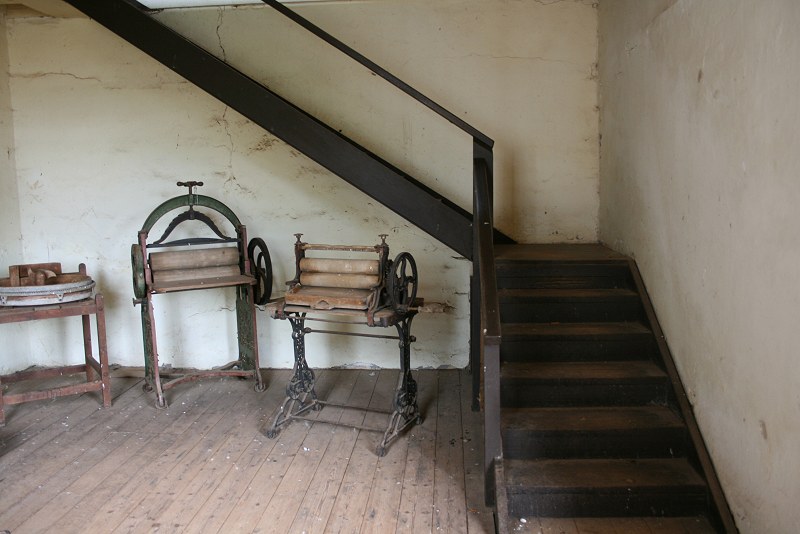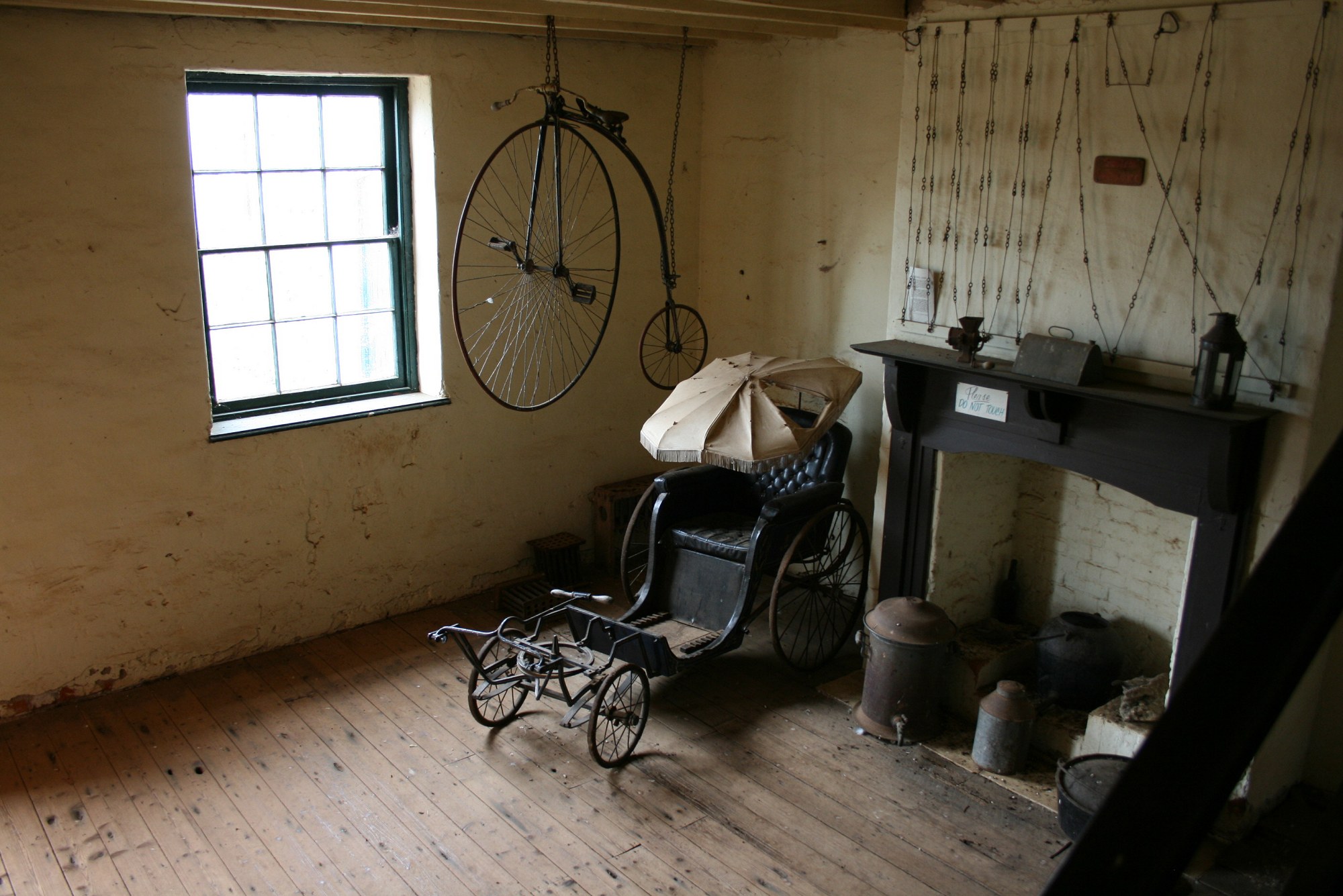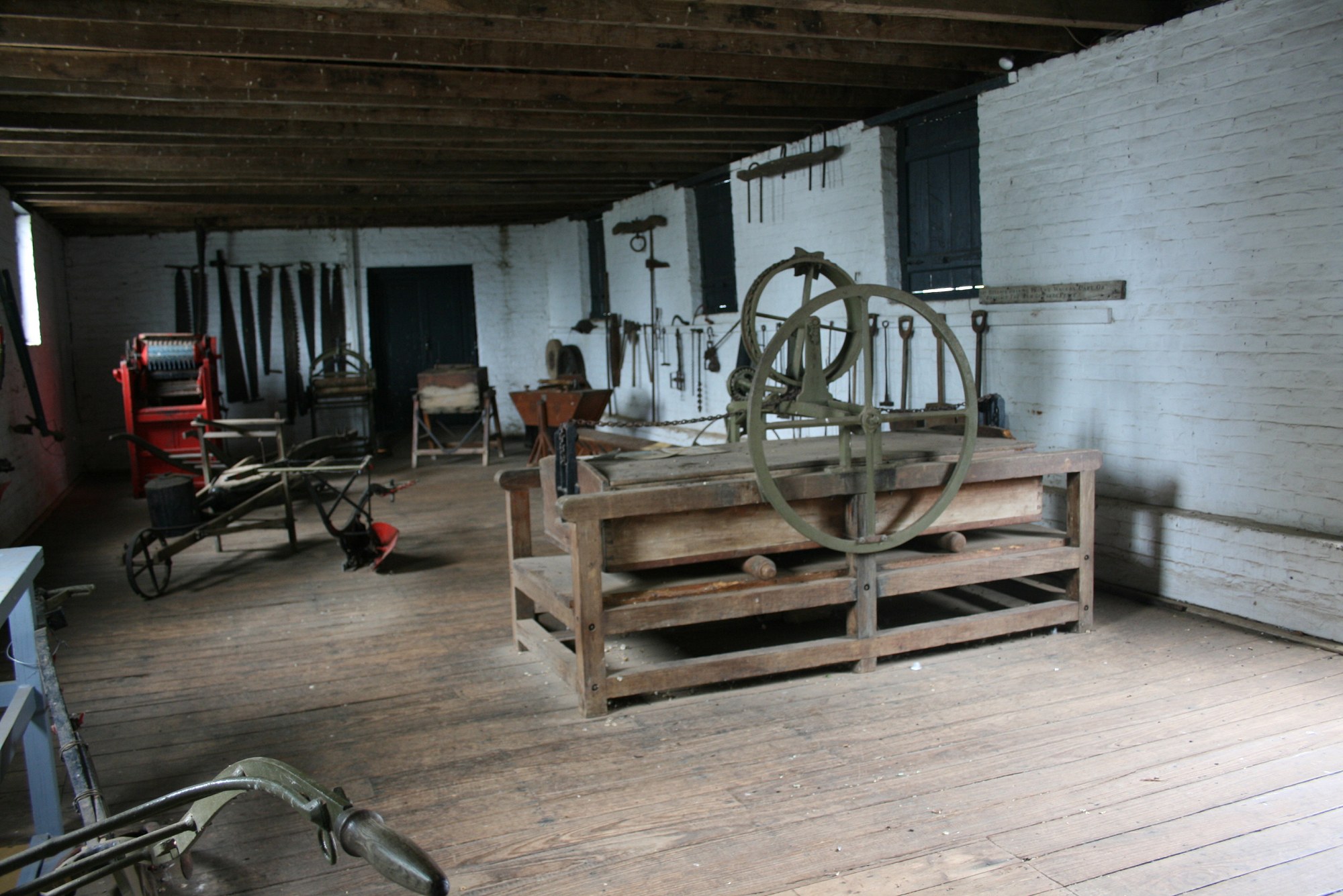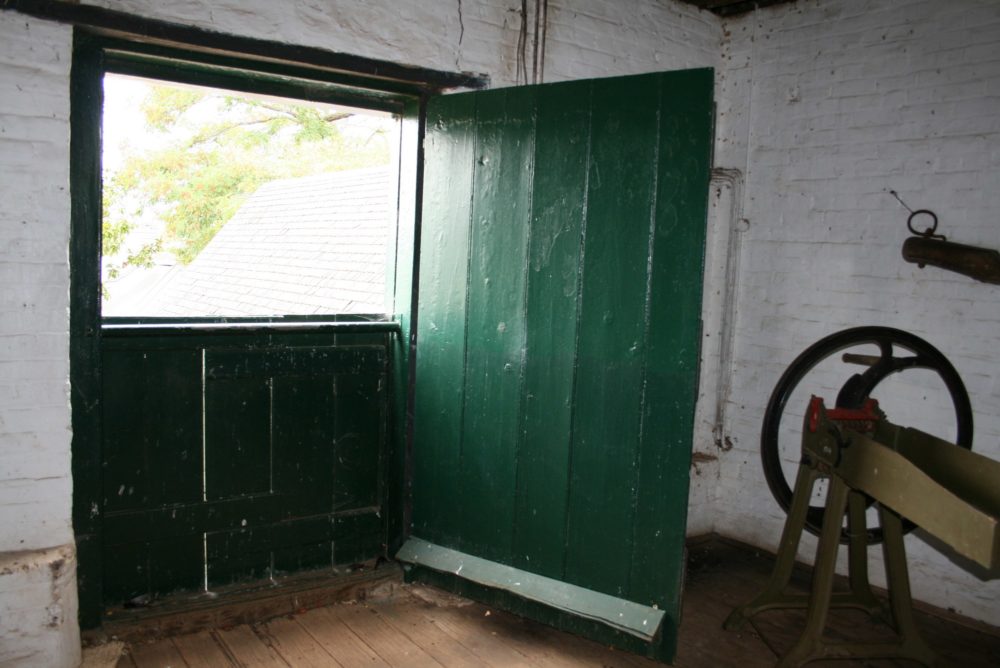Conversatory at Entally Estate, interior and exterior.
Photos 2008.
More photos, interior & exterior.
Entally
Gig
Panel at the front say, in part:
Gig with Road Cart Body
This vehicle is a gig not a jinker, sulky or trap. The differences are that a gig has the shaft running right past the body to the rear of the vehicle. Gigs are also enclosed at the back, but have ample luggage space below the seat.
A road cart body was a particular style of body built by English carriage builders.
No details on its provenance are available, but it was built by F. Paine in Launceston in the late 1800s or early 1900s.
At Entally Estate.
Turnout Seat Buggy
At Entally Estate.
Information panel says "The main feature of this style [turnout seat] of vehicle is that the body to the rear of driver's seat acts as a boot for luggage and the lid of the boot opens rearwards, which then converts into an extra seat" and can then carry four people. "This vehicle was built by Launceston Carriage and Buggy Works in the 1900s to an American design. It is fitted with shafts for a single horse but could be used with a pole for a pair." Repainted in the 1950/60s.
Entally

This is Entally, built about 1819 by Thomas Reibey, son of horse thief & businesswoman Mary who is on our $20 note. It's an Indian name, Bengali it seems from the Wikipedia article, after a "neighbourhood" in Calcutta. Or more likely, after Thomas's father's business that was named after said suburb of Calcutta. His father had been in the East India Company and made use of his connections there to establish an import business in NSW. It is the next generation that had most influence on the property though, the son, also Thomas, and his wife Catherine.

There are many outbuildings, laid out in yards. I am doing individual posts for some buildings.
Carriage House, Entally
Entally Estate: the original house was built 1819 and modified over the following decades. The yards at the back have a number of farm buildings constructed over the same period, including this carriage house and stable building.
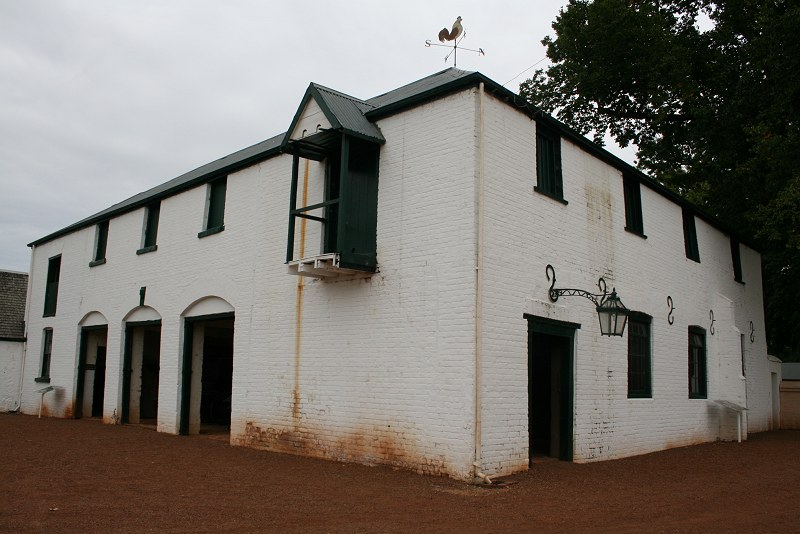
The stable area is on the right. The carriage area is on the left.
This a rough plan to give an idea of the relationship between the different parts of the building. The area over the back is more storage for carriages, that faces onto a different yard.
CARRIAGE/COACH HOUSE
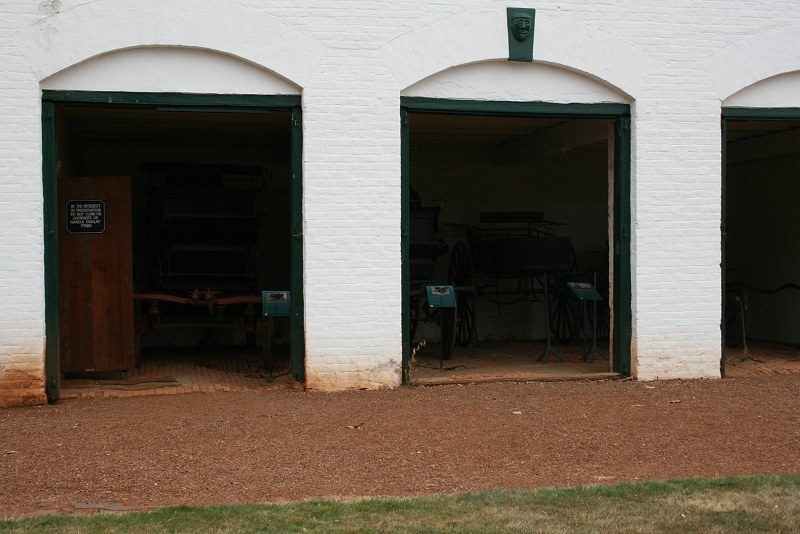
Door on left goes through to a small room (Livery or Coachman's room the panel says).

This room has a fireplace and, to the right, stairs that lead to the upper level.
Stables, Entally
Entally Estate: the original house was built 1819 and modified over the following decades. The yards at the back have a number of farm buildings constructed over the same period, including this carriage house and stable building.
The stable area is on the right. The carriage area is on the left.
This a rough plan to give an idea of the relationship between the different parts of the building. The area over the back is more storage for carriages, that faces onto a different yard.
